
The Shay locomotive is a geared steam locomotive that originated and was primarily used in North America. The locomotives were built to the patents of Ephraim Shay, who has been credited with the popularization of the concept of a geared steam locomotive. Although the design of Ephraim Shay's early locomotives differed from later ones, there is a clear line of development that joins all Shays. Shay locomotives were especially suited to logging, mining and industrial operations and could operate successfully on steep or poor quality track.

The Virginian Railway was a Class I railroad located in Virginia and West Virginia in the United States. The VGN was created to transport high quality "smokeless" bituminous coal from southern West Virginia to port at Hampton Roads.

The Western Maryland Railway was an American Class I railroad (1852–1983) that operated in Maryland, West Virginia, and Pennsylvania. It was primarily a coal hauling and freight railroad, with a small passenger train operation.

The Roaring Camp & Big Trees Narrow Gauge Railroad is a 3 ft narrow-gauge tourist railroad in California that starts from the Roaring Camp depot in Felton, California and runs up steep grades through redwood forests to the top of nearby Bear Mountain, a distance of 3.25 miles.

Cass Scenic Railroad State Park is a state park and heritage railroad located in Cass, Pocahontas County, West Virginia.
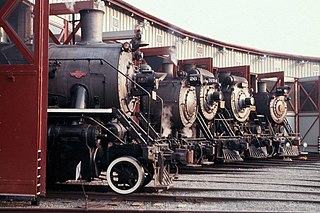
Steamtown National Historic Site (NHS) is a railroad museum and heritage railroad located on 62.48 acres (25.3 ha) in downtown Scranton, Pennsylvania, at the site of the former Scranton yards of the Delaware, Lackawanna and Western Railroad (DL&W). The museum is built around a working turntable and a roundhouse that are largely replications of the original DL&W facilities; the roundhouse, for example, was reconstructed from remnants of a 1932 structure. The site also features several original outbuildings dated between 1899 and 1902. All the buildings on the site are listed with the National Register of Historic Places as part of the Delaware, Lackawanna and Western Railroad Yard-Dickson Manufacturing Co. Site.
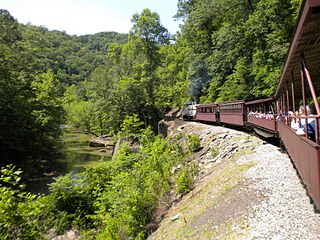
The Big South Fork Scenic Railway is a heritage railroad in Stearns, Kentucky.

The Sumpter Valley Railway, or Sumpter Valley Railroad, is a 3 ft narrow gauge heritage railroad located in Baker County, in the U.S. state of Oregon. Built on a right-of-way used by the original railway of the same name, it carries excursion trains on a roughly 5-mile (8.0 km) route between McEwen and Sumpter. The railroad has two steam locomotives and several other pieces of rolling stock. Passenger excursion trains operate on weekends and holidays from Memorial Day through the end of September.

The East Broad Top Railroad (EBT) is a 3 ft narrow gauge historic and heritage railroad headquartered in Rockhill Furnace, Pennsylvania. Operating from 1871 to 1956, it is one of the United States' oldest and best-preserved narrow-gauge railroads, and was designated a National Historic Landmark in 1964. The railroad is now preserved for use as a tourist attraction until operations ceased in 2011. After a nine-year closure, in February 2020 it was announced that the railroad had been purchased by a non-profit foundation and regular train service resumed in the summer of 2021.
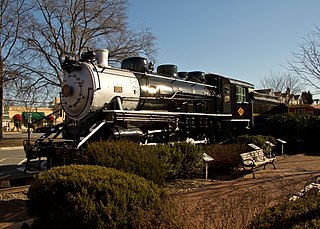
The Buffalo Creek and Gauley Railroad (BC&G) was a railroad chartered on April 1, 1904 and ran along Buffalo Creek in Clay County, West Virginia. The original Buffalo Creek and Gauley ended service in 1965.

Kay Moor, also known as Kaymoor, is the site of an abandoned coal mine, coal-processing plant, and coal town near Fayetteville, West Virginia. The town site is located in the New River Gorge at Kaymoor Bottom (38°03′00″N81°03′17″W). It is linked to the mine portal 560 feet (170 m) above on Sewell Bench (38°02′52″N81°03′58″W) in the wall of the Gorge by conveyors.
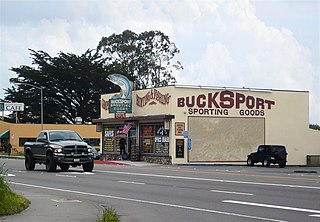
Bucksport was a town in Humboldt County, California. The original location was 2.5 miles (4 km) southwest of downtown Eureka, on Humboldt Bay about 5 miles (8 km) northeast of entrance. at an elevation of 16 feet (4.9 m). Prior to American settlement a Wiyot village named Kucuwalik stood here.

The Chesapeake & Ohio Railway No. 1308 is an articulated 2-6-6-2 "Mallet" type steam locomotive built by Baldwin Locomotive Works in 1949. It was the next to the last Class 1 mainline locomotive built by Baldwin, closing out more than 100 years of production, a total of more than 70,000 locomotives. Its other surviving sister locomotive, No. 1309, has been restored to operation at the Western Maryland Scenic Railroad in Cumberland, Maryland.

Chesapeake & Ohio Railway 2755 is a standard gauge steam railway locomotive of the 2-8-4 type, called "Berkshire" by most US railroads, but "Kanawha" by the Chesapeake & Ohio (C&O). It is one of a total of ninety built by ALCO and Lima between 1943 and 1947.
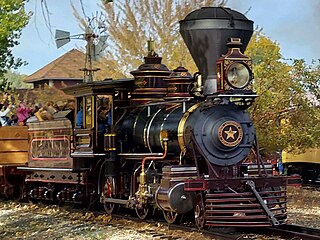
Glenbrook is a 2-6-0, Mogul type, narrow-gauge steam railway locomotive built by Baldwin Locomotive Works in 1875 for the Carson and Tahoe Lumber and Fluming Company's 3 ft Lake Tahoe narrow-gauge railroad.
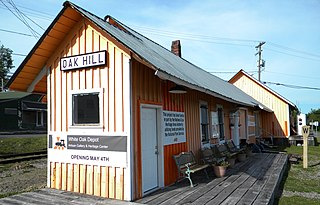
The Oak Hill Railroad Depot is a historic depot in Oak Hill, West Virginia, United States. The depot is located on the southwest corner of Virginia Avenue and Central Avenue. It opened as a station on the White Oak Railway in 1903 and later became part of the Virginian Railway, which it served until 1957. From this year until closure in 1983, it operated as a depot for the Norfolk and Western Railway. The depot now serves as the meeting place for the White Oak chapter of the National Railway Historical Society. It is the only remaining Virginian Railway depot in West Virginia.
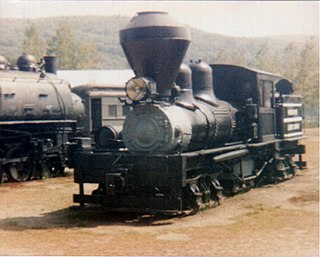
Meadow River Lumber Company No. 1 is a Shay locomotive at Steamtown National Historic Site, in Scranton, Pennsylvania. This 2-truck Shay was built by Lima Locomotive Works in May 1910. This type of locomotive was used primarily by lumber and mining companies. Some were used by other industries and on short lines. This is one of 77 Shay locomotives preserved in the United States.
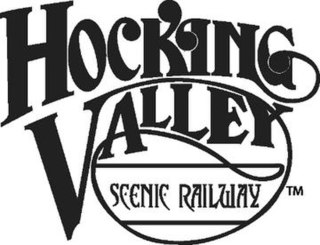
The Hocking Valley Scenic Railway is a non-profit, 501c3, volunteer-operated tourist railroad attraction that operates out of Nelsonville, Athens County, Ohio. It is also located near the popular Hocking Hills State Park in nearby Hocking County. It uses former trackage of the Chesapeake & Ohio Railway, which was in turn originally Hocking Valley Railway trackage. The current operation was founded in 1972.

Huntington station, also known as Heritage Station, is a historic railroad depot located at Huntington, Cabell County, West Virginia. It was built in 1887, by the Huntington and Big Sandy Railroad, later the Baltimore and Ohio Railroad. The former passenger station is two stories and constructed of brick with a slate roof and two chimneys. The former baggage section to the east is one story. The front facade of the former passenger station features a bay window extending from the basement to the roof and dividing it into two sections. At the rear of the passenger station is the former freighthouse. The freighthouse is a brick building with a slate roof completed in 1890, and expanded in 1897, 1911, and 1916.






















